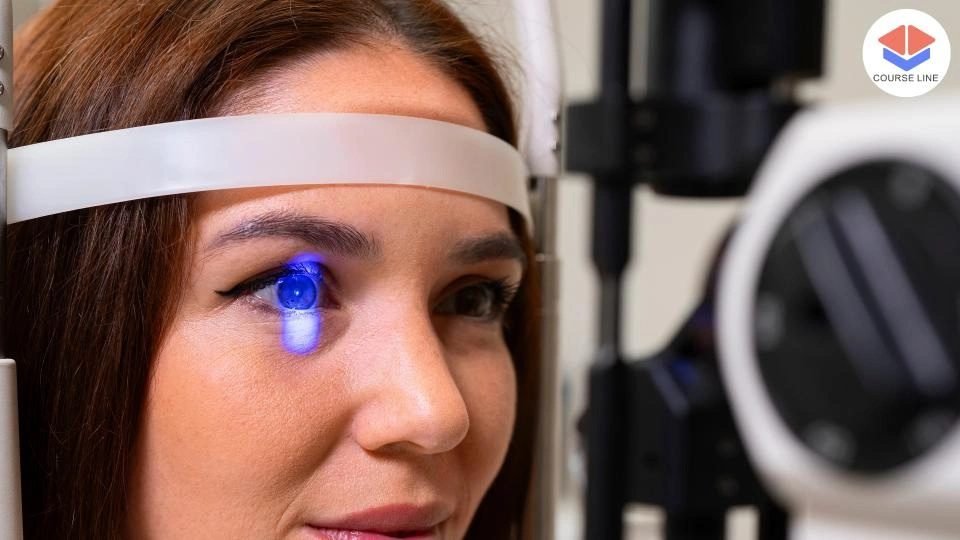Course Features
Price
Study Method
Online | Self-paced
Course Format
Reading Material - PDF, article
Duration
4 hours, 25 minutes
Qualification
No formal qualification
Certificate
At completion
Additional info
Coming soon
- Share
Overview
The Physical Optics Level 3 Advanced Diploma is a structured and engaging programme tailored for individuals interested in the deeper principles of light and its behaviour as a wave. Starting with the basic concepts in optics and the nature of light, this course provides a theoretical and experimental foundation to understand how light waves interact with matter and with each other.
Learners will explore core topics such as wave superposition, interference patterns including Young’s Double-Slit Experiment, and thin film interference—a phenomenon vital in optics and nanotechnology. The course delves into diffraction through single slits and gratings, helping students visualise and analyze the spreading of light in real-world settings. Polarization, another critical aspect of wave optics, is thoroughly examined in various contexts including reflection, refraction, filtering, and scattering.
Moving from theory to practice, students will investigate real-life applications of physical optics in optical instruments, fibre-optic communication systems, and advanced technologies. Through hands-on experiments and case studies, learners gain valuable insights into how the principles of physical optics apply in industrial innovation, telecommunications, and scientific research.
This diploma not only enhances technical knowledge but also promotes scientific thinking and analytical skills, equipping students for future academic or career pathways in optical sciences.
Who is this course for?
The Physical Optics Level 3 Advanced Diploma is a structured and engaging programme tailored for individuals interested in the deeper principles of light and its behaviour as a wave. Starting with the basic concepts in optics and the nature of light, this course provides a theoretical and experimental foundation to understand how light waves interact with matter and with each other.
Learners will explore core topics such as wave superposition, interference patterns including Young’s Double-Slit Experiment, and thin film interference—a phenomenon vital in optics and nanotechnology. The course delves into diffraction through single slits and gratings, helping students visualise and analyze the spreading of light in real-world settings. Polarization, another critical aspect of wave optics, is thoroughly examined in various contexts including reflection, refraction, filtering, and scattering.
Moving from theory to practice, students will investigate real-life applications of physical optics in optical instruments, fibre-optic communication systems, and advanced technologies. Through hands-on experiments and case studies, learners gain valuable insights into how the principles of physical optics apply in industrial innovation, telecommunications, and scientific research.
This diploma not only enhances technical knowledge but also promotes scientific thinking and analytical skills, equipping students for future academic or career pathways in optical sciences.
Requirements
The Physical Optics Level 3 Advanced Diploma is a structured and engaging programme tailored for individuals interested in the deeper principles of light and its behaviour as a wave. Starting with the basic concepts in optics and the nature of light, this course provides a theoretical and experimental foundation to understand how light waves interact with matter and with each other.
Learners will explore core topics such as wave superposition, interference patterns including Young’s Double-Slit Experiment, and thin film interference—a phenomenon vital in optics and nanotechnology. The course delves into diffraction through single slits and gratings, helping students visualise and analyze the spreading of light in real-world settings. Polarization, another critical aspect of wave optics, is thoroughly examined in various contexts including reflection, refraction, filtering, and scattering.
Moving from theory to practice, students will investigate real-life applications of physical optics in optical instruments, fibre-optic communication systems, and advanced technologies. Through hands-on experiments and case studies, learners gain valuable insights into how the principles of physical optics apply in industrial innovation, telecommunications, and scientific research.
This diploma not only enhances technical knowledge but also promotes scientific thinking and analytical skills, equipping students for future academic or career pathways in optical sciences.
Career path
The Physical Optics Level 3 Advanced Diploma is a structured and engaging programme tailored for individuals interested in the deeper principles of light and its behaviour as a wave. Starting with the basic concepts in optics and the nature of light, this course provides a theoretical and experimental foundation to understand how light waves interact with matter and with each other.
Learners will explore core topics such as wave superposition, interference patterns including Young’s Double-Slit Experiment, and thin film interference—a phenomenon vital in optics and nanotechnology. The course delves into diffraction through single slits and gratings, helping students visualise and analyze the spreading of light in real-world settings. Polarization, another critical aspect of wave optics, is thoroughly examined in various contexts including reflection, refraction, filtering, and scattering.
Moving from theory to practice, students will investigate real-life applications of physical optics in optical instruments, fibre-optic communication systems, and advanced technologies. Through hands-on experiments and case studies, learners gain valuable insights into how the principles of physical optics apply in industrial innovation, telecommunications, and scientific research.
This diploma not only enhances technical knowledge but also promotes scientific thinking and analytical skills, equipping students for future academic or career pathways in optical sciences.
-
- What is Physical Optics? 00:10:00
- Basic Concepts in Optics 00:10:00
- The Nature of Light 00:10:00
-
- Understanding Light Waves 00:10:00
- Superposition of Light Waves 00:10:00
- Interference Phenomena 00:10:00
- Young’s Double-Slit Experiment 00:10:00
- Thin Film Interference 00:10:00
- Polarization Basics 00:10:00
- Polarization by Reflection and Refraction 00:10:00
- Polarization by Filters and Scattering 00:10:00
- Experiment: Observing Interference Patterns 00:10:00
- Case Study: Thin Film Applications in Industry 00:10:00
- Diffraction and Polarization in Everyday Life 00:10:00
- Premium Certificate 00:15:00

No Reviews found for this course.
Is this certificate recognized?
Yes, our premium certificate and transcript are widely recognized and accepted by embassies worldwide, particularly by the UK embassy. This adds credibility to your qualification and enhances its value for professional and academic purposes.
I am a beginner. Is this course suitable for me?
Yes, this course is designed for learners of all levels, including beginners. The content is structured to provide step-by-step guidance, ensuring that even those with no prior experience can follow along and gain valuable knowledge.
I am a professional. Is this course suitable for me?
Yes, professionals will also benefit from this course. It covers advanced concepts, practical applications, and industry insights that can help enhance existing skills and knowledge. Whether you are looking to refine your expertise or expand your qualifications, this course provides valuable learning.
Does this course have an expiry date?
No, you have lifetime access to the course. Once enrolled, you can revisit the materials at any time as long as the course remains available. Additionally, we regularly update our content to ensure it stays relevant and up to date.
How do I claim my free certificate?
I trust you’re in good health. Your free certificate can be located in the Achievement section. The option to purchase a CPD certificate is available but entirely optional, and you may choose to skip it. Please be aware that it’s crucial to click the “Complete” button to ensure the certificate is generated, as this process is entirely automated.
Does this course have assessments and assignments?
Yes, the course includes both assessments and assignments. Your final marks will be determined by a combination of 20% from assignments and 80% from assessments. These evaluations are designed to test your understanding and ensure you have grasped the key concepts effectively.
Is this course accredited?
We are a recognized course provider with CPD, UKRLP, and AOHT membership. The logos of these accreditation bodies will be featured on your premium certificate and transcript, ensuring credibility and professional recognition.
Will I receive a certificate upon completion?
Yes, you will receive a free digital certificate automatically once you complete the course. If you would like a premium CPD-accredited certificate, either in digital or physical format, you can upgrade for a small fee.
Course Features
Price
Study Method
Online | Self-paced
Course Format
Reading Material - PDF, article
Duration
4 hours, 25 minutes
Qualification
No formal qualification
Certificate
At completion
Additional info
Coming soon
- Share
Solicitor Training Level 3 Advanced Diploma
Course Line237£490.00Original price was: £490.00.£14.99Current price is: £14.99.Border Security & Counterterrorism Awareness
Course Line237£490.00Original price was: £490.00.£14.99Current price is: £14.99.School Nurse Level 3 Advanced Diploma
Course Line237£490.00Original price was: £490.00.£14.99Current price is: £14.99.





